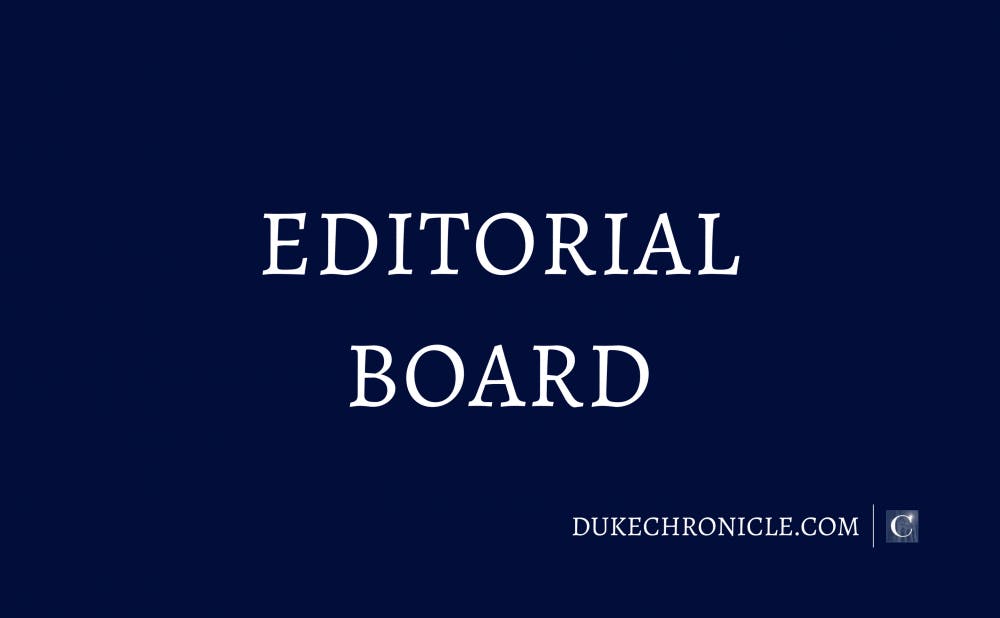Last Thursday, following two weeks of racist and anti-Semitic deadly shootings in the news cycle, Duke students woke up to news of “It’s ok to be white” flyers littered around East Campus and a pumpkin with a swastika. However, last week isn’t the first time this year these student groups have been targeted. In May, anti-Semitic flyers were sighted around East Campus and earlier this semester, a racist slur was scrawled on a wall in front of The Mary Lou Williams Center for Black Culture. These incidents are exemplary additions to a long genealogy of banal yet threatening acts of anti-blackness and anti-Semitism that are used to terrorize Black and Jewish people in daily life.
What is particularly threatening about the “It’s ok to be white” flyers is that they’re part of a coordinated white supremacist campaign targeting U.S. college campuses. There have been reports of these same flyers being found at North Carolina State University, Tufts University and the University of Vermont all in the span of a week. Last year, these same flyers were found at Harvard University, Tulane University and the University of Alberta in Canada.
The origins of this phrase can be traced back to a white nationalist recruitment strategy. “It’s ok to be white” was developed on an anonymous Internet chat forum called 4Chan in order sway white centrists toward far-right ideologies. The danger of country-wide efforts to propagate these flyers is that they could easily be interpreted as a benign sentiment to the uncritical eye. However, the more sinister intentions that lurk under the surface of those five words should concern us all. This ethno-nationalist campaign affirms and promotes the existence of whiteness not as a skin pigmentation, but white supremacy as a lethal hegemonic system, predicated on the dispossession of people of color.
These very simple posters detach race from the politics of whiteness, intentionally misinterpreting systemic critiques as individualized ones. In this framework, white supremacy and whiteness is treated as a neutral category with no social and political gravity.
At best, these words are an indication of white fragility. The much overdue magnification and recognition of people of color has been interpreted by these individuals as an attack on white people’s personhood. As such, these words intentionally conflate white pigmentation with white supremacy, in an effort to affirm white anxieties rooted in violence and dominance.
On another level, given that whiteness historically emerges as a foil to Blackness and a means of legitimizing unjust hierarchies, the corollary of “it’s ok to be white,” is “it is not ok to be Black.” Therefore, if we understand the production of whiteness as simultaneously generating the disenfranchisement and oppression of Black people and if we treat “White” as a signifier of violence with impunity, “it’s ok to be white,” becomes a blatant battle call to protect the privileges of whiteness, including the continuous carnage it creates.
What is clear in these flyers is that racism is not always conspicuous. Often, white violence is banal. White supremacy is constructed through small and subtle practices that seamlessly intertwine themselves into our everyday lives. What we typically imagine as spectacular violence, is repackaged for our daily consumption and production through things like flyers and everyday behavior.
In an academic environment such as Duke, white supremacy is often manufactured and maintained through the reframing of white supremacy as a “controversial” opinion or topic suitable for debate. Just last year, Charles Murray—co-author of pseudoscientific, eugenicist book The Bell Curve—was invited to campus by American Enterprise Institute and the Duke College Republicans to give a talk on “the increasing polarization of working class and upper-class white people.” White supremacy is also affirmed through Duke’s resistance to creating a hate and bias policy. This university has also entertained white supremacist values through its continued employment of vice president Tallman Trask II—a white administrator who in 2014, allegedly called a parking attendant, Shelvia Underwood, the n-word after hitting her with his car.
These flyers, the carved pumpkin and other small, disruptive acts of violence can easily be brushed off or explained away as comparatively meaningless in the grand scheme of things. However, those minimizing reactions are precisely what makes these acts so dangerous. Racism, anti-Semitism and other forms of white nationalist vitriol live in many manifestations—all seeking to normalize ethno-nationalism and dehumanize so many of us. This is why it is critical to resist white supremacy as it emerges on this campus in all its forms, even its most banal embodiments.
Get The Chronicle straight to your inbox
Signup for our weekly newsletter. Cancel at any time.

